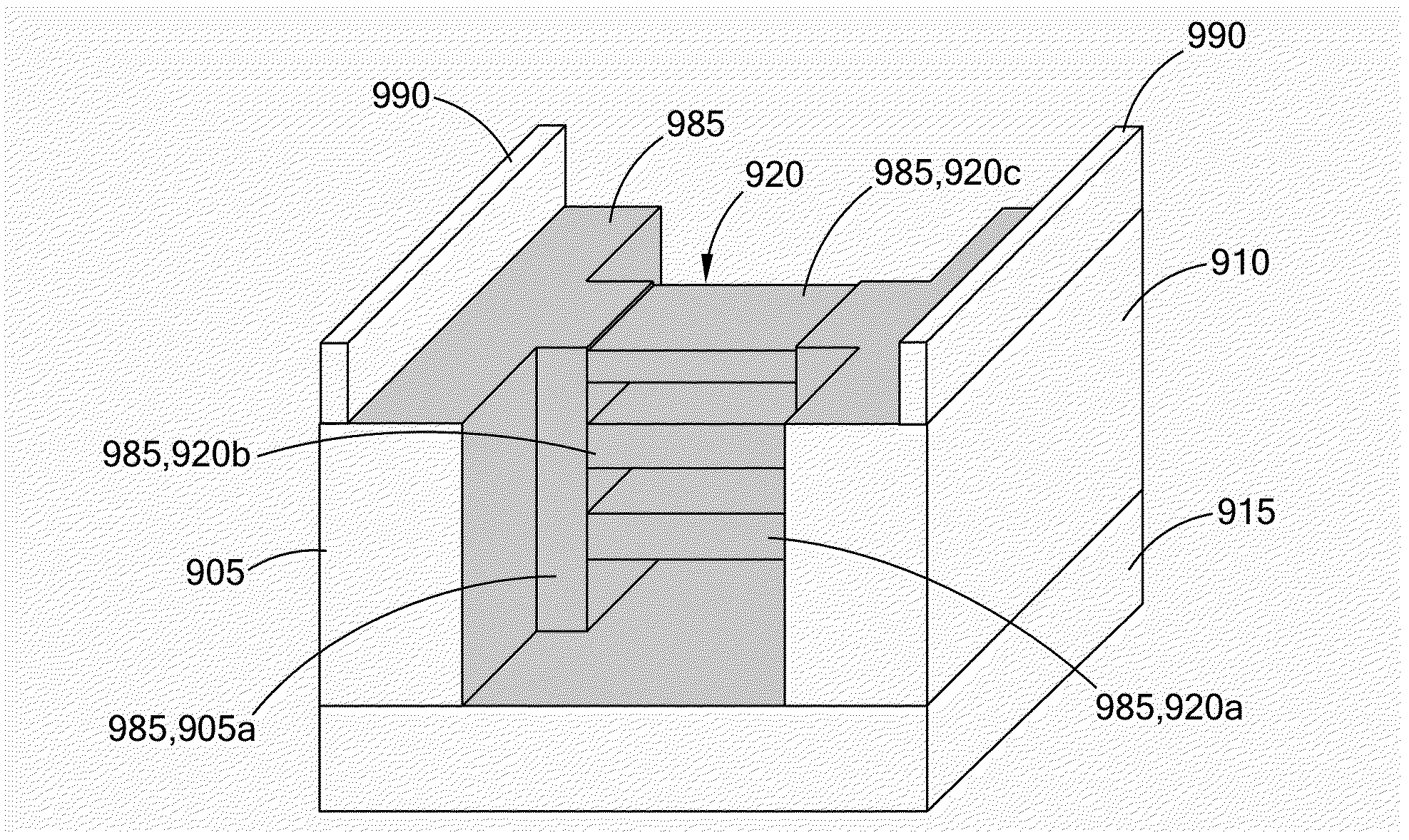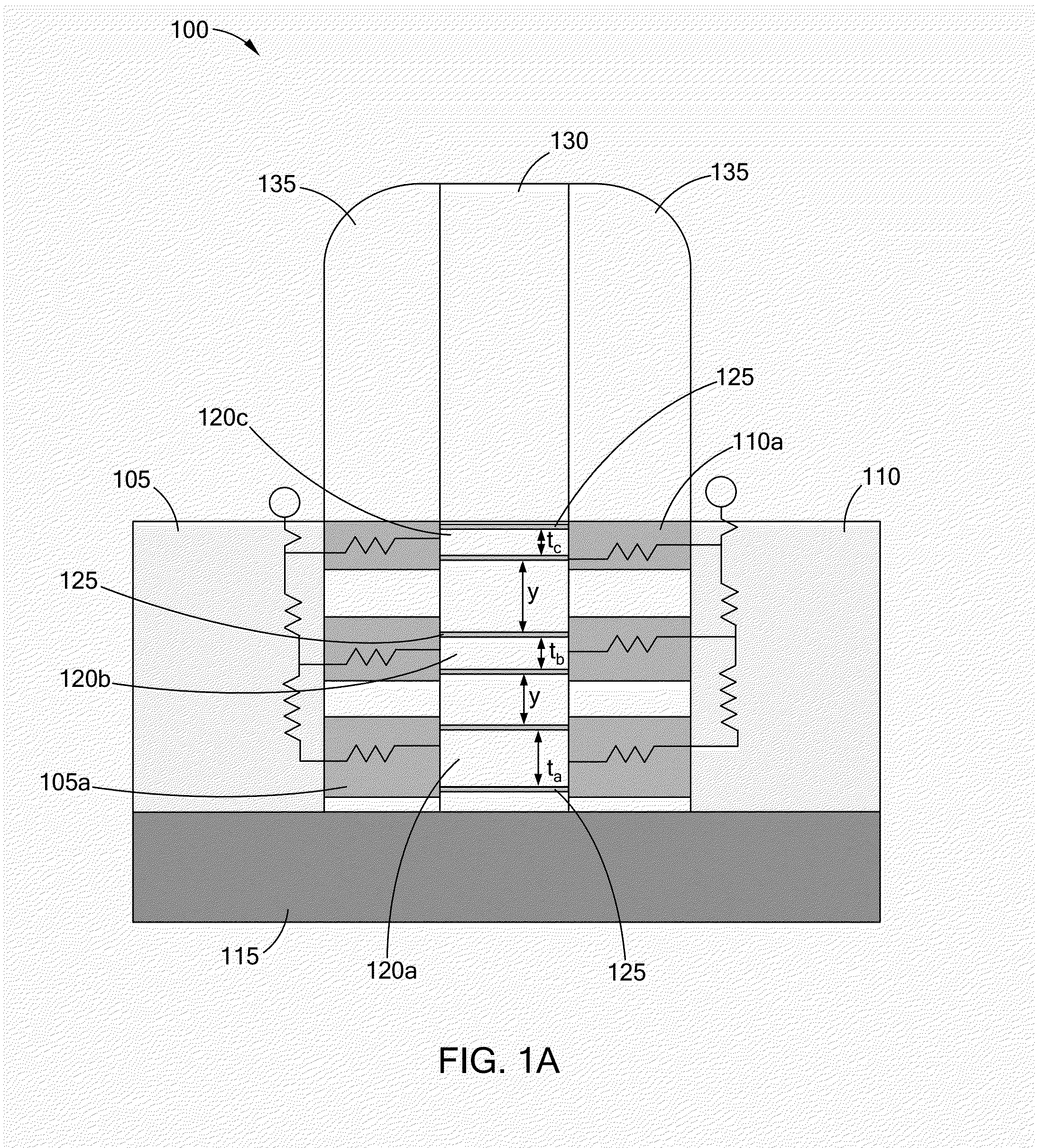Field effect transistor structure comprising a stack of vertically separated channel nanowires
a field effect transistor and nanowire technology, applied in the field of transistor structures, can solve the problems of high linearity, high cost, and large footprint, and achieve the effect of high linearity
- Summary
- Abstract
- Description
- Claims
- Application Information
AI Technical Summary
Benefits of technology
Problems solved by technology
Method used
Image
Examples
example 1
Single Channel Nanowire
[0044]In this example, a single channel nanowire is uniformly p-doped at a low level (5e14 cm−3) with a relatively large diameter (Dnw=30 nm). The doping level (dopant concentration) in the S / D regions is high (e.g., ns / d, 1e19 cm−3) and the doping concentration of the S / D extension is lower (next, 2e18 cm−3). The intrinsic doping-related S / D resistance is assumed to be 2 k′Ω. The nanowire channel is surrounded by a Al2O3 gate dielectric layer of 10 nm in thickness and then a gate metal with a mid-gap workfunction of 4.5 eV (e.g., WN). A moderate value of interface charge density 5e11 cm−2 eV−1 is assumed at the GaAs / Al2O3 interface based on published experimental data. All parameters and conditions used for the simulations are for room temperature operation.
[0045]FIGS. 2A and 2B show the simulated gm vs Vgs curves as a function of nominal gate length Lg and drain bias Vds, respectively. As Lg scales down from 800 to 100 nm, the gm linearity becomes worse (FIG...
example 2
Stack of Vertically Separated Channel Nanowires
[0047]Based on the analysis of a single nanowire channel as discussed above in reference to FIGS. 2A and 2B, it is recognized that several nanowire channels with different gm versus Vgs profiles, either descending or ascending, can be superimposed within a certain range of Vgs bias to obtain a near constant total gm for the nanowire stack, and thus overall better linearity. The profile of gm versus Vgs curve can be tuned by changing the nanowire diameter (thickness) and doping concentration.
[0048]Hence, described below is a vertically stacked nanowire gate-all-around MOSFET structure that includes nanowires having different diameters (thicknesses) and doping concentrations, as illustrated in FIGS. 1A and 1B. The structure can be realized experimentally by growing epitaxially grown, lattice-matched (e.g., GaAs / AlGaAs) or strained (e.g., InGaAs / AlGaAs) layers with different thicknesses and doping concentrations on a semi-insulating substr...
PUM
 Login to View More
Login to View More Abstract
Description
Claims
Application Information
 Login to View More
Login to View More - R&D
- Intellectual Property
- Life Sciences
- Materials
- Tech Scout
- Unparalleled Data Quality
- Higher Quality Content
- 60% Fewer Hallucinations
Browse by: Latest US Patents, China's latest patents, Technical Efficacy Thesaurus, Application Domain, Technology Topic, Popular Technical Reports.
© 2025 PatSnap. All rights reserved.Legal|Privacy policy|Modern Slavery Act Transparency Statement|Sitemap|About US| Contact US: help@patsnap.com



